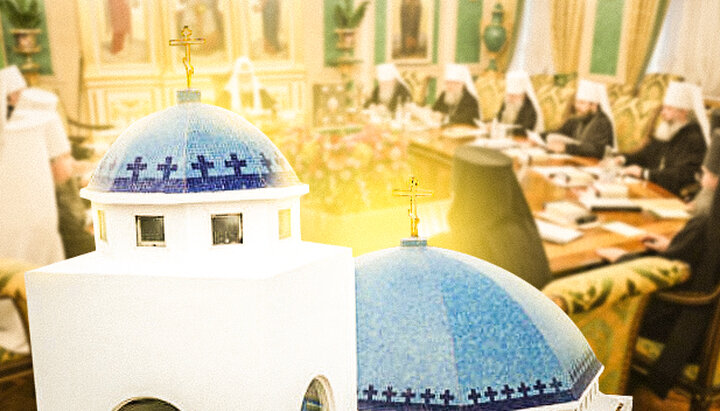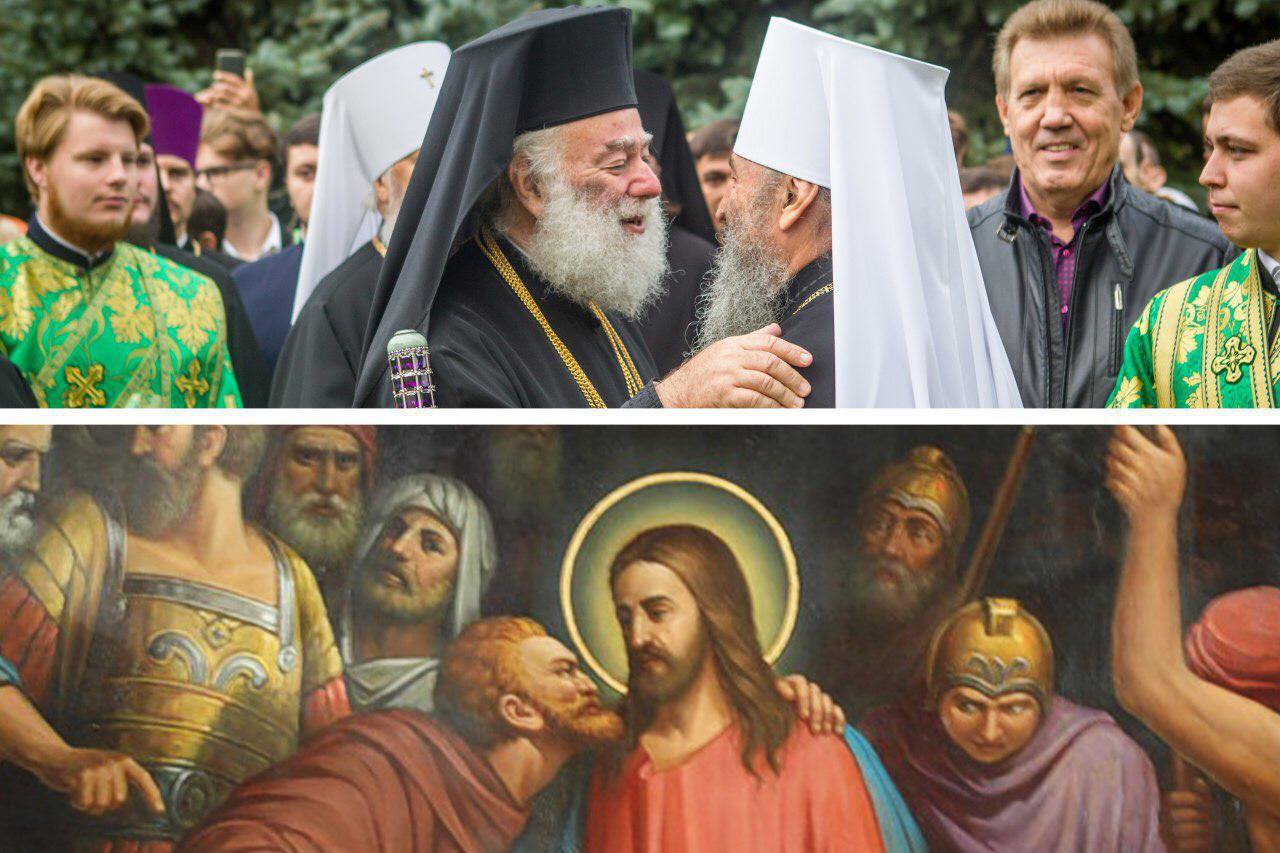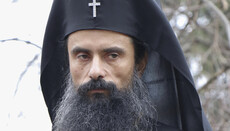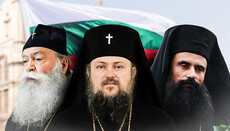Response of the Synod of the ROC to the Patriarchate of Alexandria

The Holy Synod of the ROC has responded to the indignation of the Alexandrian Patriarchate over the establishment of the Patriarchal Exarchate in Africa. We analyse it.
On January 22, 2022, the Holy Synod of the ROC held a meeting to respond to the Сommuniqué of the Holy Synod of the Patriarchate of Alexandria regarding the establishment of the Patriarchal Exarchate of Africa by the Russian Orthodox Church.
Chronology of events
On November 8, 2019, the Primate of the Church of Alexandria, Patriarch Theodoros, recognized the schismatic Orthodox Church of Ukraine, commemorating its leader Sergey (Epifaniy) Dumenko at the liturgy. After that, the ROC ceased Eucharistic communion with the Patriarchate of Alexandria.
On December 29, 2021, the Holy Synod of the Russian Orthodox Church established the Patriarchal Exarchate of Africa in response to the appeals of African clerics who disagree with the actual falling of Patriarch Theodoros and, accordingly, the Church of Alexandria, into schism.
On January 12, 2022, the Holy Synod of the Patriarchate of Alexandria adopted a Communique in which it called the formation of the Exarchate an act of revenge and accused the Russian Orthodox Church of encroaching on the canonical territory of the Church of Alexandria.
On January 28, 2022, the Holy Synod of the Russian Orthodox Church, in response to this Communiqué, made a special Statement.
The need for the ROC to respond to the Communiqué of the Patriarchate of Alexandria on January 12, 2022, is caused by the fact that the Communiqué contains a number of inaccuracies, incorrect interpretations, and sometimes outright untruth. Therefore, it is quite natural that the Holy Synod made the Statement. And since the documents of the Russian Orthodox Church and the Church of Alexandria are interrelated, it makes sense to analyze them both.
What is the "Orthodox Church of Ukraine"?
The first manipulation of the Patriarchate of Alexandria, to which the Synod of the Russian Orthodox Church draws attention, is the misrepresentation of names.
From the Statement of the Synod of the Russian Orthodox Church: “…. The decision of the Moscow Patriarchate is accounted for by ‘the fact of the recognition… of the Autocephaly of the Ukrainian Orthodox Church’ by His Beatitude Patriarch Theodoros of Alexandria.”
Here the Synod of the Russian Orthodox Church is not entirely accurate. The original Communique does not mention the Ukrainian Orthodox Church but the Orthodox Ukrainian Church (Ὀρθοδόξου Οὐκρανικῆς Ἐκκλησίας). However, the essence of this does not change, we are talking about the UOC. The Alexandrians are trying to deceive the readers of their Communiqué, convincing them that the ROC has created its Exarchate in Africa as revenge for Patriarch Theodoros's recognition of the autocephaly of the UOC. "Direct retaliation", "blackmail or revenge against us" - this is what the Communiqué says. Thus, the text of the document of the Patriarchate of Alexandria gives the impression that the ROC is “taking revenge” for recognizing the canonical UOC, which was allegedly granted autocephaly, rather than the schismatic OCU. There is a manipulation of words in the name with a clear purpose – to deceive those who are not very versed in the exact names of Ukrainian confessions.
The Synod of the ROC explains that no UOC has asked for or received autocephaly.
From the Statement of the Synod of the ROC: “The so-called autocephaly was granted by the Patriarchate of Constantinople not to the canonical Ukrainian Orthodox Church – the largest confession in Ukraine currently numbering 108 hierarchs, 12,381 parishes, 12,513 clergymen, 260 monasteries and 4,630 monastics – but to a group of schismatics who, having fallen away from the Ukrainian Church, continue to be at enmity with it. It was those people without the lawful ordination and the grace of priesthood and like-minded persons that the Patriarchate of Constantinople used, acting in defiance of the canons, to form an ‘autocephalous church’. And it was that schismatic structure, void of grace, that His Beatitude Patriarch Theodoros of Alexandria entered into communion with.”
Here the Alexandrians have been exposed. Specifying the number of parishes, monasteries, clergy and monasticism of the UOC is given to show with whom Patriarch Theodoros has broken off communion, and to put it directly – whom he has betrayed, and then it points to those with whom he has associated himself. These are schismatics who have no canonical ordination and who are at enmity with the canonical UOC.
Who distorts Orthodox ecclesiology?
The Synod of Alexandria calls the "intrusion" of the Russian Orthodox Church in Africa "unexpected, anti-canonical and unethical". The Communiqué says that the ROC “is making an attempt to alter Orthodox Ecclesiology in many of its individual parameters, but mainly in the issue of the limits of the administrative structure of the structures of the Church of Christ, with starting motives far from the Orthodox Tradition”.
However, all the accusations of the Synod of Alexandria hit first of all not the Moscow but the Constantinople Patriarchate, which proclaimed a new ecclesiology and began to encroach on the canonical territory of other Local Churches. A similarity between the actions of the Patriarchate of Constantinople in Ukraine and the Russian Orthodox Church in Africa was also pointed out in a recent letter by the Primate of the Albanian Church, Archbishop Anastasios: “ Along with the schism among millions of Ukrainian Orthodox, a new schism is being created in the sensitive African continent, where Orthodox foreign mission has been developing in recent decades.” Apparently, Vladyka Anastasios does not approve of the creation of the Russian Exarchate in Africa, however, he stresses that the reason for this is the actions of the Phanar in Ukraine.
The Holy Synod of the Russian Orthodox Church not only points out that it was the Patriarchate of Constantinople that violated the canonical rules but also speaks frankly about manifestations of the heresy of Constantinople papism: the “first without equals” theory, the appropriation of the exclusive right to grant autocephaly and the right of appeal, and so on.
From the Statement of the Synod of the ROC: “With sorrow, the Holy Synod of the Russian Orthodox Church notes the distortion of the Orthodox ecclesiology, manifested in the unfolded scenario of the so-called Ukrainian autocephaly. However, the distortion was committed not by the Russian Orthodox Church, as the Announcement of the Alexandrian Synod alleges. It is seen in the actions of the Patriarchate of Constantinople, which unlawfully intruded into Ukraine, as well as in the statements of its senior representatives. The attempts to establish the Primate, who is the first in the diptychs, as the ‘first without equals’ in the Orthodox Church with the exclusive right to grant and revoke autocephalies at his discretion, tear away parts from the Local Churches, unilaterally annul adjudgements of the Bishops’ Councils of other autocephalous Churches, and at will ‘restore’ to the holy orders the persons who have never been ordained – constitute an indisputable deviation from the patristic teaching on the Church and the centuries-old Orthodox Tradition.”
We will hear a loud condemnation of the heresy of Constantinople papism without any ambiguities and hints of compromise, as all previous heresies were condemned at the Ecumenical Councils.
Here it should be noted that the Statement contains a list of canonical crimes of the Phanar, without any diplomatic omissions. This may indicate that both at the upcoming Bishops' Council of the Russian Orthodox Church and at a possible meeting in the Amman format, the agenda will be not just the Phanar's actions in Ukraine, but the reasons that caused these actions. This suggests that we will soon hear a loud condemnation of the heresy of Constantinople papism without any ambiguity and hints of compromise, in strict accordance with how all previous heresies were condemned at the Ecumenical Councils.
On the betrayal of Patriarch Theodoros
From the Statement of the Synod of the ROC: “The members of the Holy Synod of the Russian Orthodox Church remember the speeches made by the Primates of the Orthodox Church of Alexandria in support of the canonical Church in Ukraine in the bosom of the Moscow Patriarchate, including the statements of His Beatitude Patriarchate Theodoros that he would give on repeated occasions until recently. As His Beatitude said in one of his interviews in 2016, he always took ‘a stance that the Ukrainian Church is an integral part of the Russian Orthodox Church’. While visiting Odessa in 2018, the Primate of the Patriarchate of Alexandria called upon believers to be faithful to the ‘canonical Church of Ukraine headed by His Beatitude Metropolitan Onufry’.
However, on 8th November 2019, His Beatitude Patriarch Theodoros suddenly announced his recognition of the Ukrainian schismatic group, started commemorating its head during the divine services, and on 13th August 2021, entered into the direct Eucharistic communion with him.”
On November 12, 2019, after a liturgy in the Cypriot city of Limassol, which Patriarch Theodoros visited, the clergy received envelopes containing this collage.

The top picture is the same photo that was taken in 2018 during the visit of Patriarch Theodoros to Odessa when he called on everyone to remain faithful to Metropolitan Onufry. The lower one is the kiss of Judas, a fresco from the cave Church of St. Job of the Pochaev Lavra. This collage perfectly illustrates what Patriarch Theodoros did.
Let us cite a few more statements by the head of the Alexandrian Church made by his recognition of the OCU.
“I know Ukraine very well – both bishops and lay believers – and I have a very good idea of what incentives the people who are trying to sow discord in Ukraine today are driven by. From the very beginning, when the problem of the church schism first arose, the Patriarchate of Alexandria and I as its representative took the position that the Ukrainian Church is an integral part of the Russian Orthodox Church,” the Primate said. <...> When the schismatics tried to come by force, without an invitation, to the Holy Trinity Church, which was then the metochion of the Alexandrian Church in Odessa, I stood at the door and said: this will not happen. <...> The ancient Alexandrian Church formulates its position in this way: we stand before God together with the Russian Orthodox Church and call for the Orthodox Church to be one and indivisible, as it has always been. There is no room for politics in church affairs. Politics comes and goes, but the Church remains forever and ever” (from an interview with RIA Novosti, 2016).
“As an Orthodox hierarch I ask the faithful in Ukraine to remain under the omophorion of the canonical head of the Ukrainian Church, Metropolitan Onufry” (from the statement, 2015).
The initiators of the Exarchate creation are the Africans themselves
The Synod of the ROC once again emphasized that it only responded to the initiative of a significant number of Alexandrian clerics who did not agree with the recognition of the schismatics.
From the Statement of the Synod of the ROC: “As is known, the recognition of the schismatic structure in Ukraine by His Beatitude Patriarch Theodoros met with opposition, including within the Orthodox Church of Alexandria itself. Many of its clergymen publicly spoke out in defence of the canonical Ukrainian Church, stated their disagreement with the clearly unlawful decision of their Primate and had no wish to remain under the canonical authority of the person who had embarked on the path of schism.”
Moreover, the Synod points out that the Russian Orthodox Church did not respond to the appeals of African clergy for two whole years, hoping for Patriarch Theodoros’s return to his former position. Probably, some informal contacts were held, during which they tried to explain to the Primate of the Church of Alexandria not only the wrongness of his actions but also the consequences to which they could lead. But Patriarch Theodoros did not change his mind and confirmed the immutability of his decision by his personal “concelebration” with Sergei Dumenko.
From the Statement of the Synod of the ROC: “For two years the Russian Church did not respond to the appeals coming from African clerics, but patiently waited for His Beatitude Patriarch Theodoros to change his decision. However, during that time not only did His Beatitude commemorate the head of one of the Ukrainian schismatic groups in the diptychs of the Orthodox Primates, but he also entered into the Eucharistic communion with him and other ‘hierarchs’ of that structure. Those sorrowful developments convinced the Russian Orthodox Church’s Holy Synod of the necessity to respond to the coming appeals and under these exceptional circumstances to establish the Patriarchal Exarchate in Africa.”
There was another reason to wait two whole years before creating the African Exarchate. The fact is that the recognition of the OCU in 2019 was the sole decision of Patriarch Theodoros. There was no conciliar discussion and solution of this issue in the Alexandrian Church. Therefore, it was not entirely clear whether the Alexandrian hierarchs supported such a decision or not. Over time, it became clear that most of the hierarchy of the Church of Alexandria supported the recognition of the OCU by Patriarch Theodore “by default”. To date, this issue has finally been clarified since the members of the Synod of the Church of Alexandria voted to support the position of their Primate at their recent meeting.
The ROC does not claim the canonical territory of the Church of Alexandria
From the Statement of the Synod of the ROC: “Such difficult decision, taken in the situation when the Patriarch of Alexandria recognized the Ukrainian schismatics, is by no means a sign of claims to the canonical territory of the ancient Church of Alexandria. It pursues one goal only – to give canonical protection to those Orthodox clerics in Africa who do not wish to be involved in the unlawful legitimization of the schism.”
To tell the truth, it sounds illogical: we are creating a parallel jurisdiction in Africa and we do not claim the African territory. To understand the meaning of this paradoxical statement, we must refer to the last paragraph of the Statement of the Synod of the ROC, which reads: “We call upon His Beatitude Patriarch Theodoros II of Alexandria and the archpastors of the Most Holy Church of Alexandria to renounce their support for the Ukrainian schism and return to the canonical path in order to preserve the unity of the Holy Orthodoxy.”
That is, the logic here is as follows: if the Alexandrian hierarchs continue to support the Ukrainian schism and thereby position themselves as schismatics, this will mean that the Patriarchate of Alexandria has ceased to be Orthodox and has gone into schism. Consequently, Africa is not anyone's canonical territory and the ROC has the right to create its own church structures there. If, more than expected, the Alexandrians "return to the canonical path", then the "unity of Holy Orthodoxy" will be preserved, including in Africa. In this case, will the ROC refuse to take further steps to develop the Patriarchal Exarchate or will it annul the decision on its creation?
Most likely, then those plans for the implementation of the Orthodox mission in Africa, which are now entrusted to the Patriarchal Exarchate, will be agreed and coordinated with the Patriarchate of Alexandria, and the Exarchate itself in some form will be built into the structure of the Alexandrian Church. So far, the probability of such a scenario tends to zero, although miracles may well happen.





